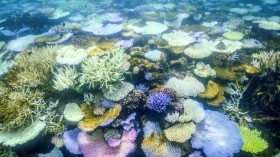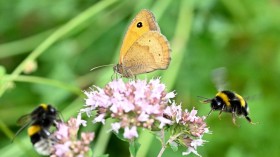The first crocodile species' virgin birth has been documented in a Costa Rican zoo. The stillborn fetus' DNA was tested as a 99.9% match.
First Crocodile Virgin Birth
The first occurrence of a crocodile becoming pregnant by herself and giving birth to a child that was 99.9% genetically similar to herself.
There have been instances of so-called "virgin birth" in several bird, fish, and reptile species, but never in crocodiles.
According to the researchers, self-reproduction may have been a feature that dinosaurs acquired from an evolutionary progenitor.
In January 2018, a female American crocodile who was 18 years old deposited an egg at Parque Reptilania. Although stillborn, the inner fetus was completely developed and did not hatch.
When she was two years old, a crocodile was captured and kept separate from other crocodiles for the rest of her life. Because of this, the scientific team in the park got in touch with a Virginia Polytechnic team in the US that specialized in virgin births, or parthenogenesis as it is known in science.
They examined the fetus and discovered that it shared 99.9% of its genetic makeup with its mother, proving that there was no father.
Clutches Despite Isolation
The researchers claim that virgin births may be more frequent in crocodiles and that they have gone undiscovered up to this point since no one has been looking for them. They write about this in the Royal Society journal Biology Letters.
The study's authors state that considering the time spent apart from partners, it is not unusual for caged reptiles to produce clutches of eggs, which are often deemed non-viable and thrown away. As a result of these observations, it is recommended that when males are not present, eggs be examined for possible viability.
In addition, the researchers note that although virgin births can take place in the company of prospective mates, cases of this can be overlooked when reproduction happens in females who cohabit with males.
Also Read: Largest Everglades Crocodile "Croczilla" Seen Basking in Florida Sun
Parthenogenesis and Dwindling Population
Parthenogenesis happens in several animals for unknown reasons, although instances are appearing increasingly frequently in the scientific literature, perhaps because researchers have begun searching for it. According to one explanation, it occurs in animals capable of parthenogenesis when their numbers are in danger of extinction.
Scientists claim that this new evidence provides exciting new information on the potential reproductive capacity of prehistoric crocodile cousins, particularly the dinosaurs, BBC reports.
Asexual reproduction by self-impregnation, or parthenogenesis, produces a zygote from an unfertilized egg. As a result, many people refer to it as "virgin birth". Asexual animals and plants both engage in parthenogenesis. In mammals, an unfertilized egg serves as the embryo's starting point. It is a step in the apomixis process in plants.
Many different kinds of invertebrates, such as scorpions, nematodes, mites, water fleas, wasps, certain bees, and other insects, go through parthenogenesis. certain vertebrate species, including certain fish, reptiles, and a few bird species, may also undergo parthenogenesis, according to Biology Online.
Related Article: Texas Woman Faces $1000 Fine for Raising Alligator as Pet for 20 Years at Home
© 2024 NatureWorldNews.com All rights reserved. Do not reproduce without permission.

![Microplastics Escape Body's Gut to 'Infiltrate' the Brain, Kidneys and Liver [Study]](https://1471793142.rsc.cdn77.org/data/thumbs/full/70195/280/157/50/40/microplastics-escape-bodys-gut-to-infiltrate-the-brain-kidneys-and-liver-study.jpg)



